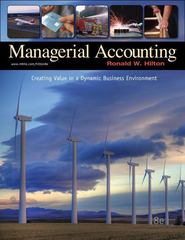Question
NO EXPLAINATION NEEDED. JUST A B C OR D. THANK YOU. This section consists of 30 multiple choice questions. Choose the most suitable answer by
NO EXPLAINATION NEEDED. JUST A B C OR D. THANK YOU.
This section consists of 30 multiple choice questions. Choose the most suitable answer by choosing a corresponding alphabet representing the answer. Answer all questions.
1. Which of the following is not a test of control for sales and collections cycle?
a. Positive confirmation of accounts receivable.
b. Inspection of documents to verify that a sales transaction has been authorized.
c. Inquiries and observation of control procedures relating to packaging goods for delivery.
d. Carry out a walkthrough test that is of approved sales to the records of receipts in the book.
2. Company should do the follow up of accounts receivable when
a. when collectability of the debtor is in doubt.
b. the company starts to have declining cash or bank balance.
c. when the date of payment is overdue.
d. when there is no acknowledgment or response received after sales invoice were served on the debtor.
3. Company prepared accounts receivable aging report as part of a control and is usually used by the auditor to
a. verify the validity of recorded receivables.
b. evaluate the provision for doubtful debts.
c. determine that all accounts are promptly credited.
d. to ensure accounts receivable are completely recorded in the account.
4. Rabiatul noticed that her cash collection from the beauty and massage services she is operating is not as expected in comparison with the number of customers that come to her salon. She suspected that her cashier might have misappropriated the collection from customers but did not find any evidence to substantiate the claim. She seldom come to her shop as she has other business to take care off. What would be best internal control to reduce misappropriation of her collections except
a. make the cashier to record the collection in the cash receipt log book.
b. to install a hidden camera.
c. to encourage customer to request for a receipt after treatment which can be used later to get a discounted service treatment.
d. to make a surprise visit cash count.
5. In making payments for the purchases, the accounting executive requires these documents before making payments except
a. vendor's invoice.
b. purchase order.
c. good received notes.
d. bank statement.
6. At the year end, the auditor would ordinarily perform a purchase cut-off test to obtain evidence that
a. all goods purchased before year-end are received before the physical inventory count.
b. goods held on consignment for customers are not included in the closing inventory balance.
c. goods observed during the physical count are not pledged or sold.
d. all goods owned at year-end are included in the closing inventory balance.
7. Effective internal control over the purchasing of raw materials should include all of the following procedures except
a. obtaining quotations from suppliers.
b. determining the requirement for the raw materials prior to the purchase order.
c. obtaining an independent-party, written quality and quantity reports prior to payment for the raw materials.
d. obtaining financial approval prior to making a purchase commitment.
8. The first document that should be prepared in the purchase cycle is the
a. purchase requisition.
b. receiving report.
c. purchase order.
d. cheques.
9. Which of the following is not an objective for reviewing the payroll work sheet?
a. To reasonably determine whether there are non-statutory deductions that are significantly large.
b. To randomly identify the records of those who have resigned and were terminated the services are not included in the payroll worksheet.
c. To assist the client's employee in preparing the payroll of the client.
d. To recalculate the total amount of payroll and to compare it with the client's ledger.
10. Which of the following item should be sent by the timekeeper to the payroll department?
a. The payroll register.
b. The clock cards.
c. The payroll receipts.
d. The pre-numbered pay cheques.
11. Which of the following best explains an effective internal control system over payroll?
a. Each employee should be asked to collect his own pay slip.
b. Unclaimed pay slip should be held by the payroll clerk.
c. The payroll clerk should compute the net wages and salaries for the employees.
d. A separate bank account for payroll should be maintained.
Step by Step Solution
There are 3 Steps involved in it
Step: 1

Get Instant Access to Expert-Tailored Solutions
See step-by-step solutions with expert insights and AI powered tools for academic success
Step: 2

Step: 3

Ace Your Homework with AI
Get the answers you need in no time with our AI-driven, step-by-step assistance
Get Started


